  |
||||
|
||||
|
- Commercial |
||||
| COMMERCIAL | ||||
 |
BLM Wyoming Oil and& Gas Program -- Economic BenefitsThe BLM Oil and Gas Program in Wyoming generates an enormous income for the nation, and also benefits local economies. (BLM Wyoming YouTube) |
|||
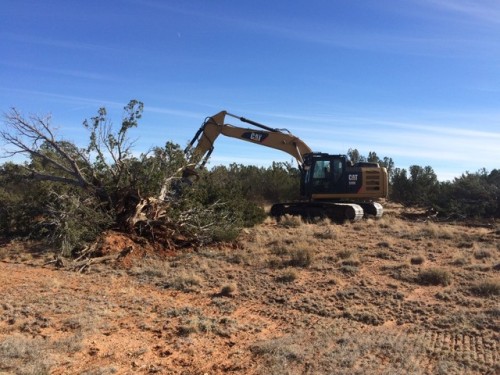 |
Biomass Partnerships Provide Electricity to Arizona CommunitiesThanks to Bureau of Land Management partnerships, invasive vegetation treated on BLM managed public land in Navajo County is now supplying electricity to Arizona communities and making way for the reestablishment of native grasslands. The BLM and its partners initiated a juniper thinning project, and the resulting mulch was donated to a bio-generation plant, Novo Power, which converted it into electricity. (My Public Lands Tumblr) |
|||
 |
Stewardship contracting and managing Northwest forestsWith the adoption of stewardship contracting authority (public law 108-7) in 2003, BLM has been able to offset forest product values against service costs, select “best value” contracts and award 10-year agreements with communities. Stewardship contracts may be used to improve, maintain or restore forests, rangelands, water quality and habitat. They can also be used to reduce hazardous fuels that pose risks. (BLM Oregon Facebook) |
|||
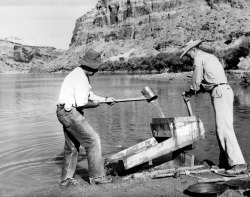 |
General Mining Act of 1872The federal law governing locatable minerals is the General Mining Act of 1872 and was approved on May 10, 1872. This law declared all valuable mineral deposits in land belonging to the United States to be free and open to exploration and purchase. This law provides citizens of the United States the opportunity to explore for, discover, and purchase certain valuable mineral deposits on federal lands that are open for mining location and patent (open to mineral entry). (My Public Lands Tumblr) |
|||
 |
Mining for Minerals 1000 Feet UndergroundFollow BLM staff as they tour a lead mine in southeastern Missouri. The Doe Run mining complex consists of several mines, and federal mineral leases administered by the BLM. This is the largest hard rock royalty generator in the United States, annually contributing $10 million in royalties to American taxpayers through the U.S. Treasury. Mineral development is one of many important land uses that ensures the BLM generates more revenue than the agency costs to run. (BLM Eastern States Facebook) |
|||
| RECREATION | ||||
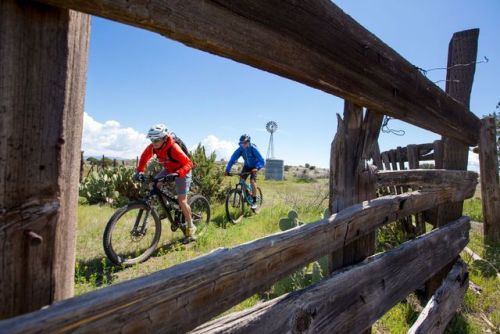 |
Arizona's Black Canyon TrailThe 80-mile Black Canyon Trail managed by the Bureau of Land Management provides mountain bikers with a long range back country trail riding opportunity. This historic National Recreation Trail is of national significance, following a route used since the times of prehistoric Native American travelers and traders. This trail provides a challenging ride experience characterized by rough, unstable soils and rocks, with various trail grades and numerous elevation changes within a harsh desert climate. The trail meanders through the Sonoran Desert landscape, including saguaro forests and rugged canyons. (My Public Lands Tumblr) Related: National Bike Month features (My Public Lands Tumblr) |
|||
 |
Idaho's "Gem of the North"Beautiful Lake Coeur d’Alene offers outstanding fishing, hiking, boating and nature viewing. Three nearby boat launch sites are available at Blackwell Island, Mineral Ridge and Killarney Lake. Overnight boating guests will enjoy three boat-in campgrounds at Popcorn Island, Mica Bay and Windy Bay Boater Parks. Hiking in this area is a popular way to view spectacular vistas of Lake Coeur d’ Alene. The 3.3-mile Mineral Ridge National Recreation Trail is an invigorating and educational hike. As visitors meander down this trail, they will learn about forest plants, animals and their interrelationships at 22 stations. The Beauty Bay recreation site offers a short half-mile trail with commanding views and a nice picnic area. (BLM Idaho Facebook) |
|||
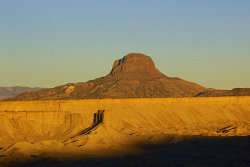 |
Explore Cabezon Peak Wilderness Study AreaRising high over the Rio Puerco valley, Cabezon Peak stands as an immovable monument against the mercurial forces of Mother Nature. Origin accounts from Navajo mythology explain that a giant who went about killing people was distracted by one of the twins formed of the earth while the other twin snuck up from behind and cut off his head. Landing crown down, the slain giant’s face constitutes Cabezon Peak as the spreading hair forms the base. The giant’s body formed nearby Mount Taylor, while the congealed blood of the giant formed the lava flows known as El Malpais. (My Public Lands Tumblr) |
|||
 |
Happy Birthday, Jupiter Inlet Lighthouse Outstanding Natural AreaIn northern Palm Beach County on Florida’s urbanized Treasure Coast lies the 120-acre Jupiter Inlet Lighthouse Outstanding Natural Area. Jupiter Inlet was designated by congress on May 8, 2008 for the preservation, protection and enhancement of seven key resources and values found on the site; these include the the remarkable biodiveristy and rich history of the site. The site is the only unit of the National Conservation Lands east of the Mississippi River, and the only unit managed by the BLM’s Eastern States. (My Public Lands Tumblr) |
|||
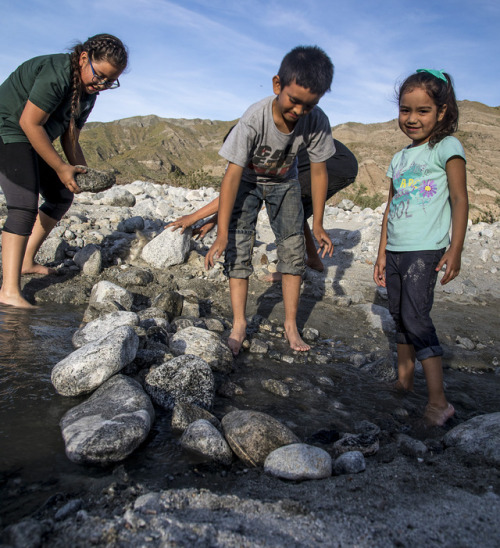 |
Every Kid in a ParkWhat do “fish days,” “snowshoe hikes,” and a “Sea Fest” have in common? These are just a few of the many ways that Bureau of Land Management staff and partners are reaching out to fourth graders, their families, and their classes. The ultimate goal? To get “Every Kid in a Park.” Launched in 2015 by the agencies that manage federal lands and waters, Every Kid in a Park lets fourth graders and their families to discover our wildlife, resources, and history for free. Fourth graders get a free pass covering entrance and standard amenity fees at all federal lands and waters for a full year. In addition, BLM field offices across the country offer events focused on getting every kid in park. BLM employees also make classroom visits to teach kids about their public lands. (My Public Lands Tumblr) |
|||
 |
Kid's Ocean DaySince 2005, the BLM Arcata Field Office in California has participated in sponsoring Ocean Day, an annual event held in June dedicated to the preservation of our oceans. Through a collaboration with Friends of the Dunes, a non-profit organization dedicated to conserving the natural diversity of coastal environments, the BLM offers Humboldt County students a comprehensive environmental education program. It consists of classroom lessons and beach clean-ups, culminating with an aerial art project. The program is designed to inspire students to become lifelong stewards of public land and our shared ocean by taking an active role in restoration. (My Public Lands Tumblr) |
|||
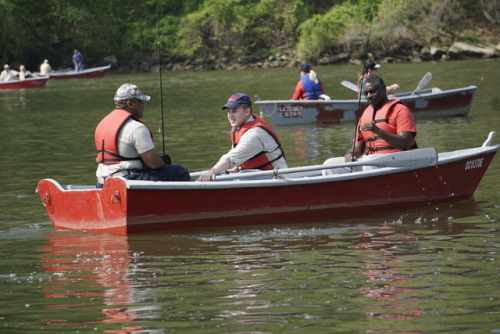 |
Fisheries for Veterans ProjectOn April 21, 2017, the Bureau of Land Management and FishingCommunity.Org (FCO) hosted the 2nd annual Fletcher’s Boathouse Shad Fishing Gala- an informal, shore and boat shad fishing event for disabled Veterans, Wounded, Injured, ILL and their families. Fishing, of course, was the main event, but the Gala was also designed to promote dialogue and develop new connections among DC-area government and NGO fisheries program representatives, and Department of Defense and Veterans Service organizations while fishing the American and Hickory shad run at the historic Fletcher’s Boathouse in Washington, DC. (My Public Lands Tumlbr) |
|||
| CONSERVATION | ||||
 |
Red Desert to Hoback MigrationBLM Wyoming and partners recently discovered migration corridor from Red Desert to Hoback and the challenges the mule deer face along their 150-mile journey. The BLM is one of many partners in the Wyoming Migration Initiative, a shared conservation stewardship effort seeking to effectively manage and conserve the migration corridor through innovative research and sharing information with the public. (BLM Wyoming YouTube) |
|||
 |
10,000 Sagebrush Plants Take Root in MontanaA double rainbow signaled the start of the day and a cloud above them softened the sun’s bright beaming. The convoy of Bureau of Land Management equipment and public servants were on a mission to plant sagebrush in central Montana... The Hale Crested Conversion and Sagebrush Planting Project was designed to test a variety of planting methods, sagebrush species, and plant dispersion patterns. The aim was to find which works best for converting fields planted with crested wheat grass during the homesteading era or burned during a prescribed fire back to habitat preferred by sage-grouse and other native species. (My Public Lands Tumblr) |
|||
 |
Amphibian and Reptile Conservation PartnershipsAs an integral part of the Bureau of Land Management’s mission, the Division of Fish and Wildlife Conservation provides national leadership to promote restoration, enhancement, and protection of fish, wildlife, and invertebrate species and their habitats. The BLM works with many partners for the preservation of reptiles and amphibian species (termed herpetofauna) and their habitats, which are in danger across large tracts of land. To that end, BLM serves as a member of a national coalition called PARC, or Partners in Amphibian and Reptile Conservation. (My Public Lands Tumblr) |
|||
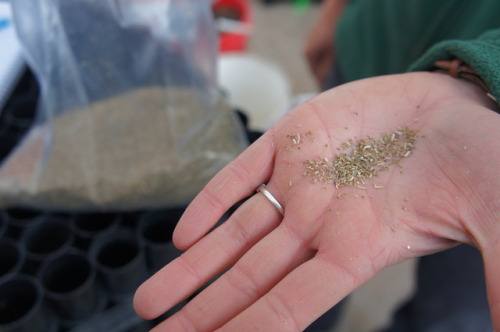 |
Sagebrush in PrisonsIt all starts in the fall, when the Bureau of Land Management and volunteer seed collectors gather volumes of sagebrush seed from condensed stands of healthy sagebrush. The seeds are then sent to Shannon Swim of the Institute for Applied Ecology, who distributes them to facilities participating in the Sagebrush in Prisons program. The Sagebrush in Prisons program is touted as a success in its ecological effort toward restoring Greater Sage-grouse habitat and its ability to improve the inmates’ lives. This year over 200,000 sagebrush seeds have been planted within the walls of three Nevada state prisons: Lovelock, Warm Springs, and the Northern Nevada Correctional Center. (My Public Lands Tumblr) |
|||
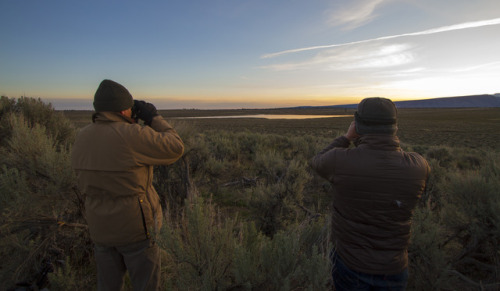 |
Counting Sage-grouse at DawnEach spring, remote areas in Oregon’s sagebrush steppe attract scores of Greater Sage-grouse (Centrocercus urophasianus) for elaborate mating rituals. These areas - called leks - provide Bureau of Land Management wildlife biologists a golden opportunity for census taking, as they host the largest annual gathering of male and female sage-grouse. (My Public Lands Tumblr) |
|||
 |
Montana's Historic Places RecognizedIn May 1862, Abraham Lincoln signed into law the Homestead Act, which encouraged Western migration by entitling settlers to 160 acres of public land after they reside on and cultivate the land for five years. For much of the West, including Montana, homesteading gave rural communities their roots. Some of these homesteads took root on huge, isolated stretches of land while others blossomed into bustling towns that acted as the gateway to the West. Two Montana locations from the homestead era recently landed on the National Register of Historic Places thanks to Bureau of Land Management archaeologist. (My Public Lands Tumblr) |
|||
| HEADLINES AND HIGHLIGHTS | ||||
 |
Watch the Solar Eclipse on Your Public LandsOn Monday, August 21, 2017, a total solar eclipse will cross the United States, coast-to-coast. The path of the eclipse will cross BLM-managed public lands in Idaho, Oregon, and Wyoming. Visitors planning to watch this phenomenon on public lands should plan ahead using the information shared below. State specific guidelines are also provided to ensure that everyone can enjoy their public lands safely during this memorable event. (BLM website) |
|||
 |
The secret history of the world -- an oral history of Logan ButteAt an undisclosed location in central Oregon, landlocked by private land, there are 800 acres of BLM territory that can tell the history of the world. Thanks to the right mixture of a good fossil record and layer upon layer of ancient volcanic ash, Logan Butte has about 40 million years of continuous history, which is enough to make this Oregon parcel very well known among the global paleontology community. (BLM Oregon Facebook) |
|||
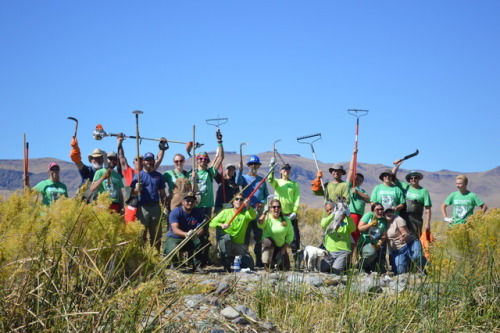 |
"Making a Difference" Award
Bureau of Land Management presented eight awards to valuable volunteers from across the nation, including three youth awards. Across the nation, volunteers are integral to helping BLM achieve its day-to- day
responsibilities of public land stewardship. Last year alone, over 27,000 BLM volunteers performed nearly 1 million hours of service, valued at close to $23 million. The annual “Making a Difference” Award recognizes exceptional volunteers who have contributed thousands of hours to
improving the public lands. These hard-working volunteers have helped the BLM monitor cultural resources, improve fish habitats, keep campers safe, and provide environmental education, interpretation, and other visitor services. (My Public Lands Tumblr) |
|||
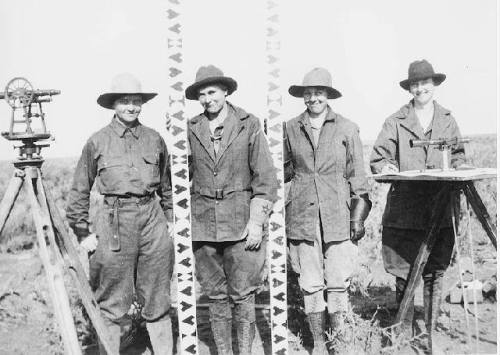 |
GLO Celebrates 205 YearsThe Bureau of Land Management was officially established in 1946, but it has roots dating back two hundred years, since the foundation of the General Land Office (GLO) on April 25, 1812. The “Gateway to Land Ownership” as it was colloquially dubbed, helped millions of Americans in the 19th and 20th centuries acquire public lands for private and agricultural usage, while simultaneously generating income for the Federal Government. (My Public Lands Tumblr) |
|||
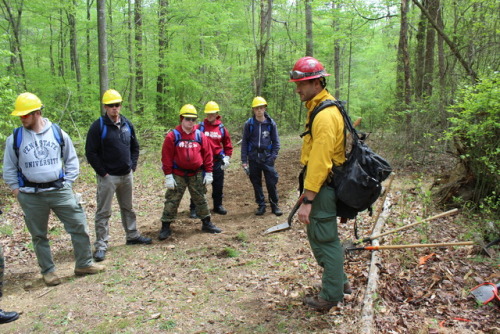 |
BLM and Team Rubicon Train New Wildland FirefightersThe Bureau of Land Management, the Department of the Interior and Team Rubicon, train many of our nation’s military veterans the basics of wildland firefighting. Since the partnership was initiated in April 2015, the BLM has trained 500 Team Rubicon members and expects to train hundreds by the end of this year. Team Rubicon members trained as wildland firefighters responded to wildfires in Alaska, Nevada, California, Oregon and Washington and have assisted with numerous fuels projects, such as prescribed burns. (My Public Lands Tumblr) |
|||
| WILDLIFE QUESTION OF THE WEEK | ||||
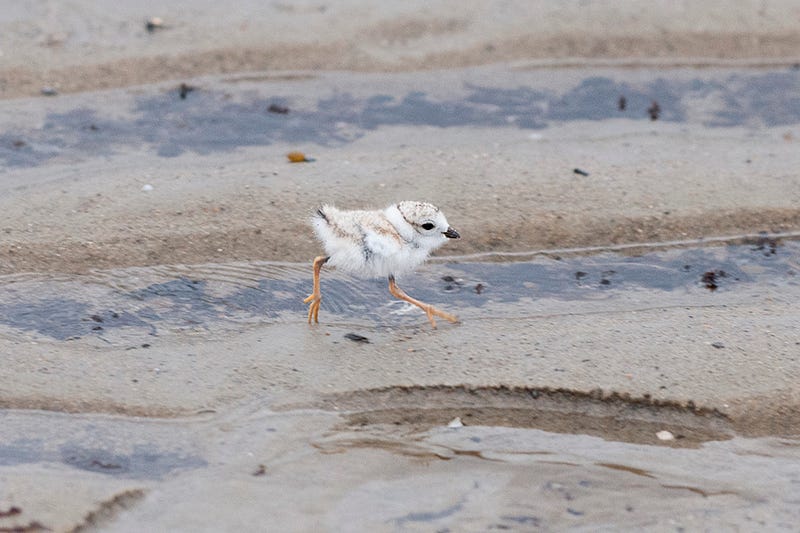 |
Which of the following are considered shorebirds?
a) American Avocet |
|||
| DOI HIGHLIGHTS | ||||
 |
Memorial Day: Honoring the FallenOn Memorial Day, the nation pauses to honor all those who have made the ultimate sacrifice and gave their lives for their country. From local Revolutionary War battlefields to World War II cemeteries around the country, the memory of those heroes is enshrined forever. From all of us at Interior, we thank the service members who laid down their lives for this nation and their family members for their sacrifices. (DOI video) |
|||
 |
President Proposes $11.7 Billion Budget for Interior in FY2018The President's budget allows Interior to carry out its core mission of responsible multiple-use of public lands in a way that both conserves America’s iconic landscapes and supports responsible resource development. (DOI News Release) Related: BLM Budget (BLM website) |
|||
 |
Interior Announces 19 New HiresThe Department of the Interior announced the addition of 18 individuals to lead and assist the Department during the Trump administration. Hires include key positions including the Chief of Staff to the Secretary, Associate Deputy Secretary, Principal Deputy Solicitor, and two Principal Deputy Assistant Secretaries among others. “I’m incredibly honored to have so many experienced, capable and energetic individuals on the team at Interior,” said Secretary Ryan Zinke. “Whether on a football team, SEAL team, or the Department of the Interior team, I’ve always said, everyone’s job is just as mission-critical as my own in order for the team to operate at its full potential. Together we will work toward modernizing the department and delivering better services and experiences to the taxpayer while cutting costs and protecting our most treasured places. I’m excited to continue the work we’ve already started.” (DOI News Release) |
|||
| WILDLIFE QUESTION OF THE WEEK ANSWER | ||||
|
e) All of the above "When we want a getaway with family and friends, we often seek out a place near the water. And because we’re having a great time, it’s easy to overlook the amazing company we have, shorebirds. These birds often travel as far (or way way farther) than we do to enjoy what the beach has to offer. In many cases, this means a place to gather food or raise young. We’ve posted a number of cute shorebird chicks that rely on the beach or shore as a reminder that there’s enough beach for all of us." (10 Fluffy Reasons to Share the Beach, USFWS) |
||||
|
||||






